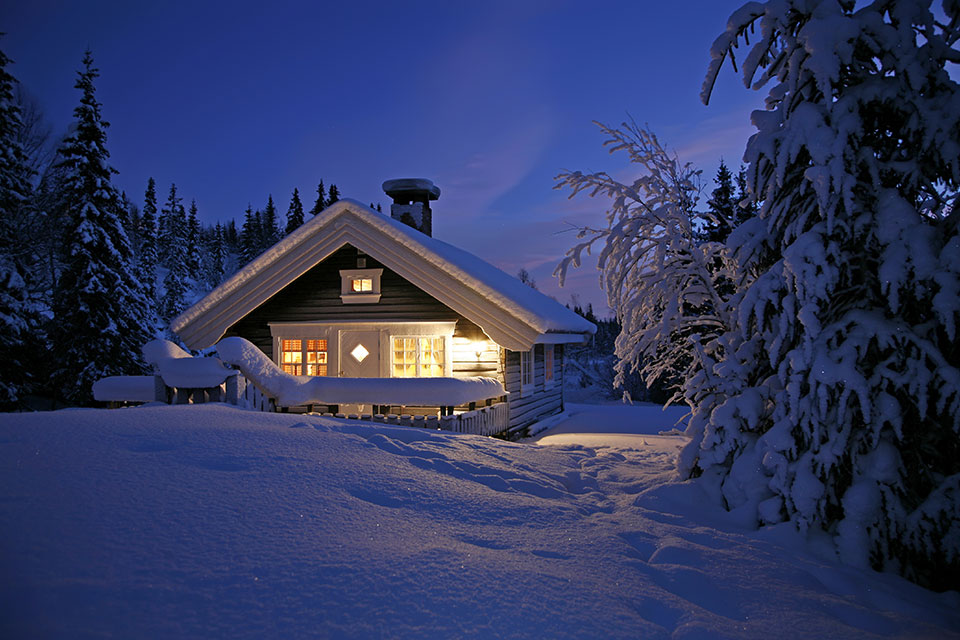Freezing temperatures, ice, snow and wind can cause severe damage to your home and property. If you live in an area that experiences harsh winters, here are some areas to evaluate to help protect your home:
Build Up of Ice and Snow on Your Roof
Ice dams occur when heat from a house escapes the attic and warms the roof. Snow on the roof melts and then refreezes, causing a ridge of ice to form and trap water on the roof. This water can leak into the home, causing major damage. Safeguard your roof by:
- Thoroughly clean gutters in the spring and late fall. Clogged gutters may allow ice to form and back up under the roofline.
- Make sure proper attic insulation is in place, keeping your house warm, but your attic cool – reducing snow melt on the roof.
- Ensure continuous ventilation of attic air, which should be only 5 to 10 degrees warmer than the outside.
- Heavy ice and snow build-up on your roof can cause seepage or even a collapse. If snow accumulation is significant, hire a professional to “shovel” the roof.
Plumbing Inside and Outside Your Home
Plumbing located within exterior walls or unheated crawl spaces is most vulnerable to freezing or bursting. Protect your pipes by:
- All interior pipes should be insulated or have wall insulation around them, especially in vulnerable areas such as attics, crawl spaces and along outside walls.
- Use weather -resistant insulation to protect exterior pipes.
- Cabinet doors under sinks should be kept open during a heavy freeze to allow heat to circulate around pipes.
- Hire a professional to winterize the outdoor sprinkler system and remove all residual water, which can freeze and cause pipes to burst.
- Disconnect exterior hoses from their faucets and install frost-free hoses and hose bibs.
- Properly insulate unfinished areas such as basements and garages, where pipes may be exposed.
- Keep your thermostat set at a minimum of 55 degrees in the winter.
- Install a low temperature alarm if you are away often. It will activate your alarm system if the home temperature falls below a pre-set level.
- If you suspect a frozen pipe, shut off the water main source and call a plumber.
Fireplaces, Furnaces and Heating Systems
Improper use or poor maintenance of heating systems can cause fire, puff-backs and smoke damage. Wood burning fireplaces and stoves are among the worst culprits when it comes to winter house fires. Follow these fire preventive measures:
- Clean chimneys and flues on fireplaces and stoves annually.
- Use a fire screen to control flying embers and burn only seasoned hardwood to reduce the potential for creosote buildup. Place ashes in a metal container and remove from the house immediately. Never put ashes in or near the trash.
- Service furnaces and boilers at least once a year.
- Check for scorch marks from baseboard heaters on interior walls.
- Keep portable space heaters at least 3 feet away from flammable objects, such as window treatments, furniture and bedding. Do not use extension cords to power the unit.
- Keep backup generators outdoors – away from open windows, doors and vents. And never use an outside grill inside the house either.
- Change smoke and carbon monoxide alarm batteries every six months. Replace detectors after 10 years.
Emergency Access
Severe weather could impact access to your home in the event of a fire, medical or other emergency. Take these measures before a winter storm to ensure fast and easy access:
- Your house number should be clearly marked in a conspicuous area at the front of the home.
- Contract a snow removal service that guarantees removing the snow from your driveway after every 6 inches of accumulation.
- A large maker should be placed near a fire hydrant. Clear away surrounding snow.
Secondary, Seasonal Homes and Unoccupied Homes
Secondary/seasonal homes or homes that are unoccupied during much of the winter require special consideration:
- Hire a property manager or caretaker to check on the home at least once a week for mechanical failures and signs of damage. An inspection should include running the water in every sink, flushing toilets, and opening cabinet doors under sinks to avoid freezing pipes.
- If the home is not professionally winterized, set the thermostat at 55 degrees or higher. Unheated seasonal structures with plumbing should be winterized.
For more great tips. visit Chubb.



